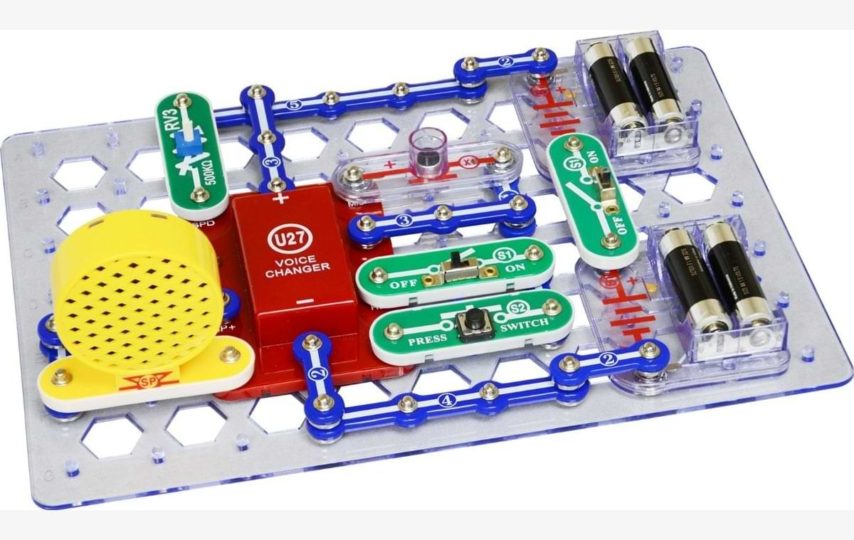It requires precision to build the final product using a snap circuit for kids. Science oriented toys maximize the benefits and value of early education. A snap circuit encourages a child to read diagrams and follow steps to create an interactive toy. Children can learn basic electricity principles and these principles become a part of their learning experiences. This experience stays for a life span.
Snap Circuit for Kids
Snap circuit for Kids consists of building blocks with snaps, a plastic board and a manual. A kit comes with battery blocks, lamp blocks, switch blocks, and other blocks in different colors and bear numbers on them.
Depending on the kit, kids can create projects like a police siren, simulating a flying saucer, lighting a bulb and more. Snap circuit for kids has different versions such as:
- Junior
- Standard
- Pro
- Extreme version
As creating a project requires batteries, kids learn that a battery is a source of power. There are explanations and diagrams for stating the objective and steps for each project.
Even if some kids are unable to learn the cause and effects while creating projects, they learn the importance of following steps and precision.
Deepen the Learning
Parents can watch video tutorials and read student guides to understand concepts and explain and simplify these concepts to kids. The first few projects require the involvement of parents to explain concepts like how resistors control the flow of current, batteries supply power, and current flows through wires. Parents can demonstrate how resistors can be used to control the flow of current. What is a short circuit and damages it can cause?
Working on projects like lighting a bulb teaches the importance of balance between the resistor and power source. Too much or too little power or resistance does not work.
Order of Circuit
While using a snap circuit for kids, they learn to connect in parallel and in series. Parents can explain parallel circuits with the example of overhead lights in different rooms and series circuits with the example of switch and light in each room. They can help kids learn how changing the position of the switch and bulb in a parallel circuit or series circuit affects the project operation.
Once kids are familiar with resistance, series circuit, parallel circuit and other concepts, they can create the first project on their own. They learn what works and what does not after switching components. Encouraging them to choose wire, resistor, power sources and circuit to create their own project boosts their learnings.
Snap Circuit Kit Glossary
Parents should understand and be able to explain the following concepts to kids:
Electricity
In simple words, the presence and flow of electric charge is electricity. Bulbs, microwave, TV, dishwasher and many home appliances and equipment require electricity to work. To make it easy for kids to understand, electric charge flows through a conductor just like water flows through pipes. Flowing water through a pipe requires a pump. Similarly, flowing electricity through a circuit requires batteries or some other source of power.
Electric Current
The rate at which electric charge flows through a wire or any other conductor is called electric current. Some conductors offer high resistance to electricity and some offer low resistance. Electric charge flows smoothly through materials that offer low resistance.
Voltage
In simple words, voltage is the pressure at which a power source such as a battery pushes electric charge through a conductor. A battery contains plus and minus signs. Electric charge flows from negative to positive. It is just like a pump pumping water in a certain direction. Switching off a circuit interrupts the flow of electric charge just like shutting off a faucet stops the flow of water. Kids learn how controlling the flow of electricity using a switch makes things work.
Difference Between Electronics and Electricity
Drills, hairdryers, dishwashers and many other appliances are not electronic but electrical. Electronic products use transistors, resistors and other parts to control themselves. Electrical appliances are mechanically controlled.
It is important for parents to understand the basic, important concepts so that they can explain to their kids. A snap circuit for kids requires the involvement of parents. Kids cannot create the first few projects on their own.













